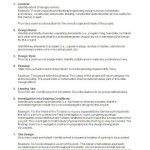Interior and Exterior Paints: Essential Considerations for Your Painting Project
Whether you're embarking on a fresh coat for your home's interior or exterior, choosing the right paints is crucial. Interior and exterior paints possess distinct characteristics tailored to the specific demands of each environment. Here's a comprehensive guide to help you make informed decisions for your painting project.
Interior Paints: Comfort and Aesthetics
Interior paints play a significant role in shaping the ambiance and comfort of your living spaces. They provide a canvas for color schemes, create visual interest, and contribute to the overall aesthetics of your home. Consider the following factors when selecting interior paints:
- Color: Choose colors that complement your furniture, décor, and desired atmosphere.
- Finish: Opt for finishes like matte, satin, or eggshell for a soft, diffused look. High-gloss finishes reflect light and create a more dramatic effect.
- Durability: Interior paints should withstand wear and tear, especially in high-traffic areas like kitchens and hallways. Consider paints with stain resistance and scrubbability.
- VOCs: Volatile organic compounds (VOCs) are emissions from paints that can affect indoor air quality. Choose paints with low- or no-VOC formulations for a healthier environment.
Exterior Paints: Protection and Curb Appeal
Exterior paints are designed to protect your home from weather elements and enhance its curb appeal. They provide a long-lasting barrier against moisture, UV rays, and environmental pollutants. Here are key factors to consider:
- Durability: Exterior paints must withstand extreme temperatures, precipitation, and fading. Choose paints formulated with high-quality resins and pigments.
- Moisture Resistance: Prevent water penetration by selecting paints with excellent moisture resistance. Opt for primers and sealers to further enhance protection.
- UV Protection: UV rays can cause paints to fade and degrade over time. Look for paints with UV-resistant coatings to maintain their color vibrancy.
- Color: Choose exterior colors that complement your home's architectural style and surroundings. Consider factors like sunlight exposure and local climate.
Professional Application for Optimal Results
While DIY painting can be a rewarding experience, professional painters possess specialized knowledge and expertise to ensure optimal results. They understand proper surface preparation techniques, paint application methods, and can identify potential issues early on. Consider hiring a professional painter to maximize the longevity, aesthetics, and protection your paint job provides.
Environmental Considerations
As environmental consciousness grows, it's essential to opt for paints that minimize environmental impact. Look for paints with eco-friendly formulations that reduce VOC emissions, contain recycled materials, and are disposed of responsibly. Choose paints that contribute to sustainability without compromising quality.
By carefully considering the factors outlined above, you can make informed decisions regarding interior and exterior paints for your painting project. Whether you choose to DIY or hire a professional, a well-executed paint job can transform your home's appearance and ensure its durability and comfort for years to come.

The Difference Between Interior And Exterior Paint

What Is The Difference Between Interior And Exterior Paint Baumerk

Can I Use Interior Paint On Exterior Surfaces

What Is The Difference Between Interior And Exterior Paint Baumerk

Difference Between Interior And Exterior Paint

Learn The Four Differences Between Exterior And Interior Painting

Calpro Interior Exterior Paint Paints

Interior Vs Exterior Paints Can You Use For Painting Berger Blog

Preference Interior Exterior Paint Paints

Is There A Difference Between Exterior And Interior Paint








